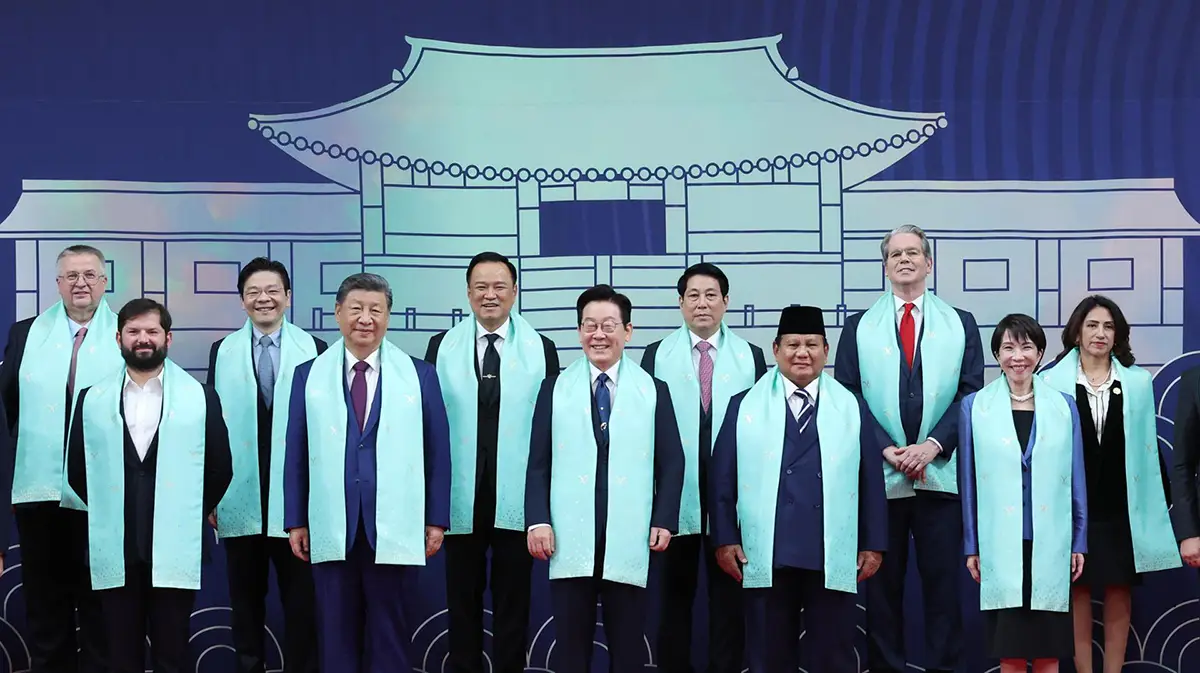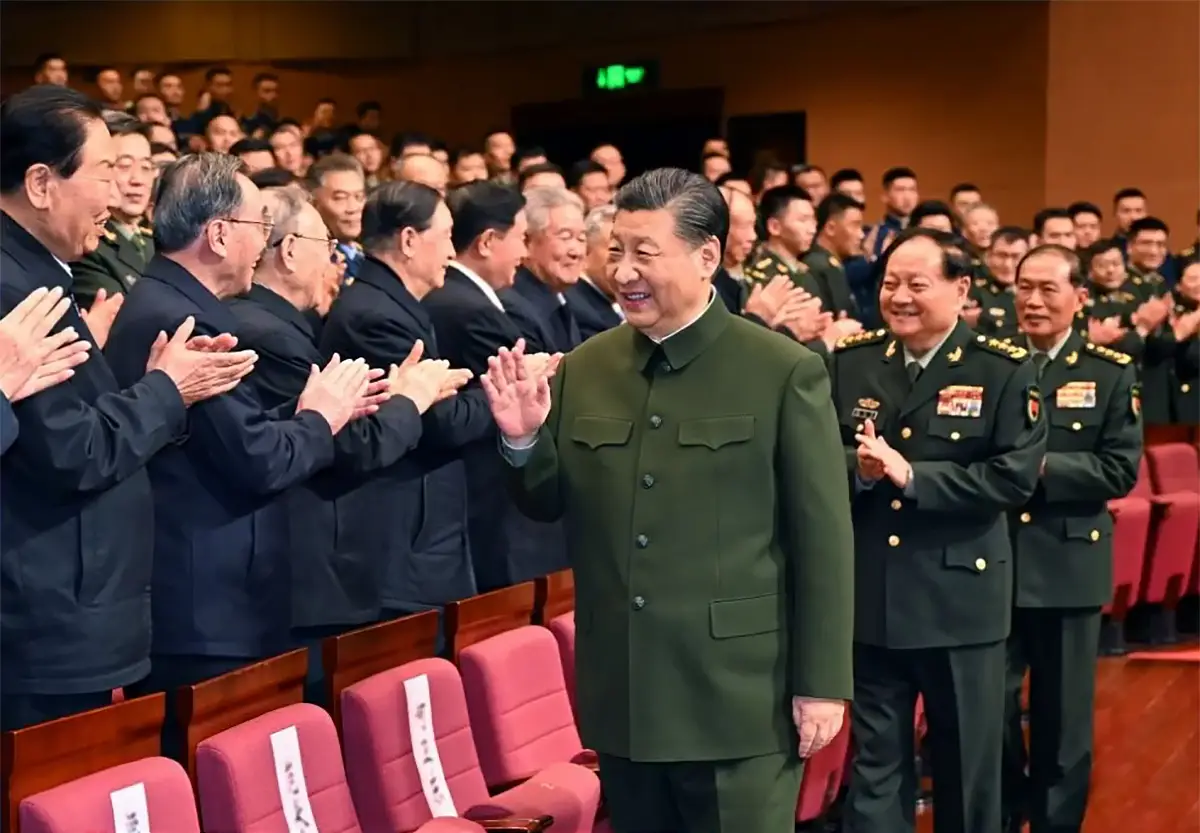On December 2, Chinese president Xi Jinping and Russian President Vladimir Putin inaugurated the Power of Siberia pipeline, which links the world’s largest natural gas exporter to the world’s largest natural gas importer. Xi described the project as a “landmark project of bilateral energy cooperation.” The opening of the pipeline is the capstone of a nearly 20-year effort by Beijing to build the infrastructure necessary to make Russia into a major energy supplier to China. This process involved contentious negotiations and high-stakes diplomacy, with Russia’s need for Chinese capital after the global financial crisis of 2007–2008 and the imposition of Western sanctions on Russia for its annexation of Crimea in 2014 adding impetus for cooperation.
For China, the pipeline is part of a larger picture that the United States should seek to understand. The importance of the Power of Siberia to Beijing goes beyond providing China with overland delivery of a large volume of natural gas. It is also a symbol of deepening ties between China and Russia at a time when both countries’ relationships with the United States are fraying. The longer the US-China trade war continues — and it is ongoing despite the announcement by Beijing and Washington on December 13 of a phase one deal — the more likely it is to contribute to the forging of even closer links between China and Russia.
With gas beginning to flow through the Power of Siberia, Russia is poised to become China’s most important supplier of energy. In crude oil, Russia displaced Saudi Arabia as China’s biggest supplier on an annual basis in 2016, due in large part to the construction of Russia’s East Siberia Pacific Ocean pipeline and its spur to China, which began crude deliveries in 2011. Russia exported 1.4 million barrels per day of crude oil to China in 2018, accounting for 15 percent of China’s crude oil imports. In natural gas, Russia was already supplying China with small volumes of liquefied natural gas (LNG), delivered by ship, accounting for one percent of China’s LNG imports in 2018. Now the Power of Siberia pipeline is likely to make Russia one of China’s largest — if not the largest — natural gas supplier after the pipeline ramps up to its full annual capacity of 38 billion cubic meters (bcm), which is targeted for 2024. For comparison, the 34 bcm of natural gas Turkmenistan delivered to China in 2018 was the most of any supplier in that year.
The flow of large volumes of Russian gas to China is important to Beijing for a variety of reasons, some of which emerged after Xi and Putin presided over the signing of the 30-year supply agreement for the Power of Siberia in May 2014. Specifically, the Chinese government regards the Power of Siberia as way to help meet China’s growing demand for natural gas, diversify China’s import portfolio, support coal-to-gas switching in northern China, forge closer ties to Russia at a time when both countries have tense relations with the United States, and remind the United States that China has alternatives to U.S. LNG. Each of these reasons is worth exploring in more detail.
Meet growing natural gas demand
The Chinese government aims for natural gas to comprise 15 percent of China’s energy mix by 2030, up from 7.8 percent in 2018, as part of its effort to improve air quality and combat climate change. China is unlikely to achieve this target with domestic production alone. The country imported 45 percent of the natural gas it consumed in 2018. China National Petroleum Corporation (CNPC), China’s largest oil and natural gas company, expects China’s reliance on imported natural gas to exceed 50 percent by 2035, with imports of 310 bcm in that year. The 38 bcm to be delivered by the Power of Siberia constitutes 12 percent of this amount.
Diversify China’s import portfolio
Beijing regards natural gas supplies from Russia as a way to diversify China’s suppliers and import routes. The cutbacks in deliveries from Turkmenistan in the winter of 2017–2018, when China was experiencing severe natural gas shortages, the tightening of U.S. sanctions on Iran and Venezuela in 2018 and 2019, the attacks on Saudi Arabian oil infrastructure in September 2019, and the ongoing trade war with the United States have all reinforced for China’s government and oil companies the importance of not being too dependent on any single country or region. In addition, Beijing values oil and natural gas imports from Russia because they neither travel long distances through the sea-lines of communication nor transit the Strait of Hormuz and the Strait of Malacca, the world’s most strategic oil chokepoints by volume.
Support coal-to-gas switching
The Power of Siberia pipeline is likely to bolster Beijing’s ongoing efforts to substitute natural gas for coal in heating in northern China, the country’s coldest region, to reduce air pollution. During the third quarter of 2017, local authorities in these coal-burning provinces aggressively switched coal boilers to natural gas boilers, in some cases exceeding the targets set by the government. They subsequently discovered that they could not secure adequate natural gas supplies due to China’s inadequate pipeline and storage infrastructure, leaving some residents out in the cold. The Power of Siberia should support coal-to-gas switching by delivering natural gas and also by spurring the construction of new infrastructure. Reuters reported on November 29 that more coal boilers were being removed and new pipelines laid in anticipation of the arrival of Russian gas.
Move closer to Russia.
Several commentators have described the pipeline as a manifestation of deeper China-Russia ties at a time when both countries’ relationships with the United States are deteriorating. During the ceremony for the launch of Power of Siberia, Xi and Putin both praised the pipeline as a symbol of closer bilateral relations. On that same day, Xi told Russian Security Council Secretary Nikolai Patrushev that China and Russia should stand closer to each other at a time when the United States and some other Western countries “have increased their interference in the internal affairs of China and Russia, threatened the sovereign security of both countries, and impeded their social and economic development,” according to a summary of the meeting posted on the website of China’s Ministry of Foreign Affairs.
Remind Washington that China has alternatives to U.S. LNG. The launch of Power of Siberia is a high-profile reminder that China is deepening its relationships with other natural gas exporters while purchases from the U.S. are on hold due to the trade war. China was the third largest buyer of U.S. LNG in 2017 and appeared on track to import even more in 2018, before Beijing imposed a 10 percent tariff on U.S. LNG in September 2018, increased to a 25 percent tariff in June 2019. While China’s imports of U.S. LNG decreased by 86 percent in the year after the initial tariff was imposed, purchases from other exporters grew, notably Australia, Malaysia and Russia, according to Chinese customs data.
Chinese government and oil company officials have indicated that Chinese purchases of LNG are likely to resume post-trade war. For example, Zhang Jianhua, the director of China’s National Energy Administration, stated in September 2019 that “if there is no trade war, we can import crude oil and natural gas from the United States. But because of the increase in tariffs, enterprises can’t afford it.” Similarly, in April 2019, Li Hui, a vice president of China National Offshore Oil Corporation (CNOOC), said, “For China-U.S. LNG trade, you have to look at the big trends and at the trade frictions. If this problem can be solved appropriately, LNG trade could be very big.”
It is not entirely clear exactly what the phase one trade deal to be signed in January, means for U.S.-China energy trade. According to the Office of the United States Trade Representative, China has agreed to increase its purchases of a variety of U.S. goods and services, including energy, by $200 billion over the next two years. It is difficult to see how China can even come close to buying an additional $200 billion worth of goods and services from the United States without a lot of LNG. This, in turn, suggests that Beijing will remove the tariff on U.S. LNG. However, at this time neither Beijing nor Washington has provided information about the role of LNG in the trade deal.
The longer China’s tariffs on U.S. LNG remain in place, the more Russia stands to benefit. Thanks to the trade war, Russia probably appears to China to be a more reliable supplier of energy than the United States. The Power of Siberia started deliveries weeks ahead of the start date agreed upon in 2017. In another project to build an LNG plant and port in northern Siberia, the Russian firm Novatek and its international partners (France’s Total, China’s CNPC and Silk Road Fund) completed the Yamal LNG project on time and on budget in December 2017 despite Western sanctions. CNPC has a contract to purchase 3 million tons of LNG per year (4 bcm) for 20 years from the project. CNPC and CNOOC are also invested in another Russian LNG project, Arctic LNG 2, which is likely to supply customers in China after it commences operations. Moreover, China and Russia have been discussing a second natural gas pipeline, Power of Siberia 2, which would run from West Siberia to western China. Although Moscow has been much more enthusiastic about this project than Beijing, a prolonged trade war might increase Beijing’s interest in seeing this project move off the drawing board.



